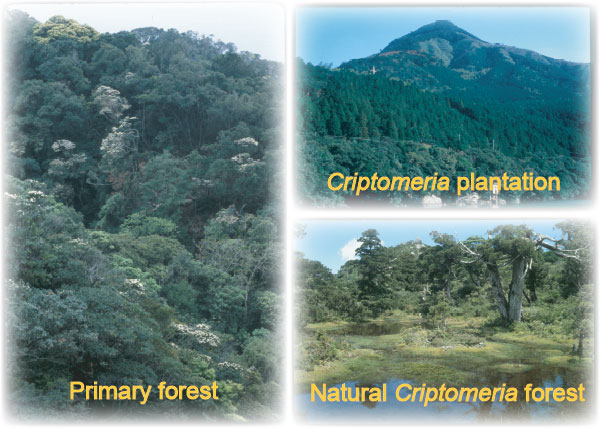
Yaku
Island
Yakushima (30�ßN, 130�ßE) is a mountainous island that has the highest mountain (Mount Miyanoura-dake, 1,936 m above sea level) in the Ryukyu Archipelago between
Vegetation zones of Yakushima can be divided into three altitudinal zones: broad-leaved forest (< 1,000 m), broad-leaved and coniferous mixed forest (1,000-1,800 m) and dwarf-bamboo scrub (> 1,800 m). The broad-leaved forest is dominated by evergreen oaks (Castanopsis cuspidata var. sieboldii, Quercus acuta and Quercus salicina), Distylium racemosum and Persea thunbergii. The mixed forest is the most massive forest in
Human population is about 14,000 concentrated in the lowland. Large trees of Cryptomeria were selectively logged at high altitudes up to 1,850, when the forest in the mountain area became the National Forest and the logging by the local people was banned. During the last 80 years, large areas of indigenous forests at lower altitudes have been clear-felled by the Forestry Agency for charcoal or pulp production. Over the past 50 years or so, most of the clear-felled land has been converted to Cryptomeria plantations, but secondary stands of broad-leaved forests have also naturally regenerated. Private plantations of Citrus and Cryptomeria are prevalent in the lowland.
A part of Yakushima has been protected as National Park and Wilderness Area. In 1993, this part was also registered as a World Natural Heritage. However, increasing number of tourists and economic development are threatening the ecosystems. Macaques and deer have caused serious agricultural damage in recent years. The conversion of old-growth forests into monocultural conifer plantations may have been responsible for migration of animals from forested areas to agricultural areas.
